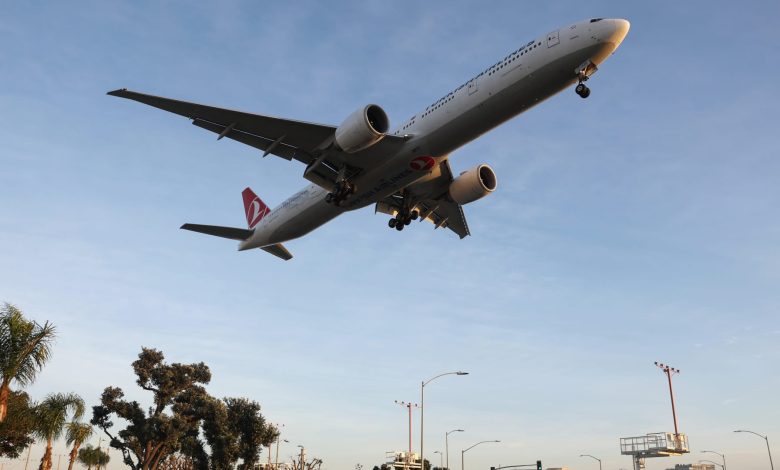Global economy faces headwinds, but aviation is expected to defy them

A Turkish Airlines plane landing from a park next to Los Angeles International Airport on Dec. 26, 2024.
Mario Tama | Getty Images
The global economy may be facing an uncertain 2025 in light of trade tensions and geopolitical conflicts, but there’s a bright spot that investors can take solace in: aviation.
The profitability of the aviation industry is expected to improve in 2025, despite global gross domestic product growth being forecast to drop to 2.5% in 2025 from 3.3% in 2024, according to the International Air Transport Association.
In a report released on Monday, the IATA said revenue, operating profits and net profits of the industry are expected to increase from 2024, although some of those were lower than projections made in December.
For example, net profits for the industry are projected at $36 billion for 2025, up from the $32.4 billion earned in 2024, but slightly lower than the December projection of $36.6 billion.
The aviation industry’s net profit margin is also forecast to rise to 3.7% in 2025, from 3.4% the previous year.
Total revenues are projected to hit a record high of $979 billion, 1.3% higher than the previous year, but down from the $1 trillion in its last forecast.
The IATA attributed the better results mainly to two factors: lower jet fuel costs and greater efficiency.
It expects passenger load factors will reach an all-time high in 2025 with a full-year average of 84%, “as fleet expansion and modernization remains challenging amid supply chain failures in the aerospace sector.” PLF shows how efficiently an airline is filling its seats.
Jet fuel costs are expected to average $86 per barrel in 2025, down from $99 in 2024, the IATA noted, saying it will translate into a total fuel bill of $236 billion, $25 billion lower than the $261 billion incurred in 2024.
“Recent financial data show minimal fuel hedging activity over the past year, indicating that airlines will generally benefit from the reduced fuel cost. It is not expected that fuel will be impacted by trade tensions,” IATA said.
CEO optimism
Airline CEOs told CNBC that airlines are holding up despite the uncertainty.
Air India CEO Campbell Wilson told CNBC’s Monica Pitrelli at the World Air Transport Summit over the weekend that 2025 has been “a year of surprises” for the airline, “whether it’s politics, tariffs, geopolitics, [or] closer to home, some conflict issues.”
India and Pakistan recently closed their airspace to each other’s aircraft after military strikes carried out by both sides in May. Pakistan planes are banned from Indian airspace till June 23, and Indian planes are barred from Pakistan till June 24.
“Uncertainty is not helpful for business, but the underlying fundamentals of this market … and the upside we see ahead of Air India is driving us forward, because we think there’s massive opportunity to be realized,” Wilson added.
He said India is the third-largest air travel market in the world, and estimated that it’s growing at an annual growth rate of 8% to 10%. “So if Indians start traveling… at the intensity of China, it’s going to absolutely explode in volume internationally,” he said.
Adrian Neuhauser, president and CEO of Colombian flag carrier Avianca, said in an interview Sunday “When the world sneezes in any way … Airlines just get sick very quickly.”
However, he said, Avianca’s passenger load factors are still holding up and revenue has improved. “So the concern is there, but as of today, we’re still seeing the numbers be there.”
Asia the fastest-growing region
North America is expected to generate the highest absolute profit among all regions in 2025, and the Asia-Pacific region is set to see the largest demand growth in 2025, with revenue per passenger kilometer projected to grow 9% year on year, the IATA said.
Revenue passenger kilometers, or RPK, is a measure of the volume of passengers carried by an airline. The metric is used to assess airline performance and passenger demand.
The IATA said that “if an airline sees a consistent increase in RPKs on a particular route over several months, this might prompt the carrier to increase flight frequency or deploy larger aircraft to meet growing demand — potentially boosting revenue and market share.”
It attributed strong passenger demand in the Asia-Pacific to the relaxation of visa requirements in several Asian countries, especially China, Vietnam, Malaysia and Thailand.
The IATA did note, however, that the economic landscape poses some challenges, with the GDP forecast for the region, particularly China, having been lowered.



